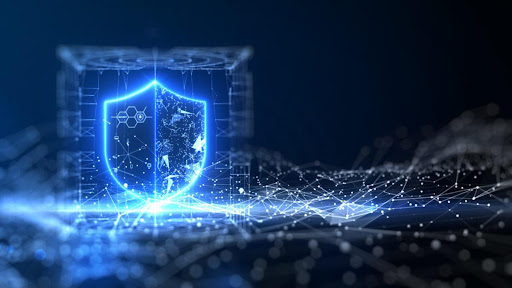As hackers' intelligence develops more, so does the technology designed to defend against even their most sophisticated attacks.
Endpoint Detection & Response (EDR) technology can be invaluable to companies or managed service providers (MSPs), but with such a powerful tool comes a slew of questions about the EDR process, what it protects against, and why we need it.
What is EDR and What is the EDR Process?
Endpoint Detection & Response (EDR) is a proactive security approach that tracks endpoints in real-time and looks for threats that have infiltrated a company's defenses. It's a new technology that provides more visibility into what's going on at endpoints by giving an explanation and detailed information on attacks. EDR processes enable you to detect if and when an attacker is in your network, as well as the path of the attack if it occurs, allowing you to respond to incidents in record time. But what is the EDR process?

What is the EDR Process and What information does EDR collect?
What is the EDR process? - Endpoint Detection & Response is powered by sensors installed on your endpoints and does not require a reboot. All this information is combined to create a complete picture of endpoint activity, regardless of where the device is located. Let's talk about what is the EDR process.
How does EDR work - what is the EDR process?
What is the EDR process? - Endpoints, which can be any computer program in a network, such as end-user workstations or servers, are the center of EDR. Security solutions for EDR provide real-time visibility and proactive detection and response. They attain this via various means, including
- EDR Process includes Collecting data from endpoints
- Sending data to the EDR platform
- Analyzing the data
- Flagging and responding to suspicious activity
- The EDR process also retains data for future use
Endpoint data generation includes communications, process execution, and user logins. This generated data has been anonymized.
The anonymized data is then transmitted from all endpoints to a centralized location, which is generally a cloud-based EDR platform. Depending on the organization's needs, it can operate on-site or as a hybrid cloud.
The solution analyses data and performs behavioral analysis using machine learning. Insights are utilized to establish a baseline of normal activity to identify anomalies that represent suspicious activity. Threat intelligence is used in some EDR processes to provide context utilizing real-world examples of cyberattacks. To detect attacks, the technology compares network and endpoint activity to these examples.
The solution detects suspicious activity and alerts security teams and other stakeholders. It also starts automated responses based on predefined triggers. One example would be temporarily isolating an endpoint to prevent malware from spreading throughout the network.
EDR solutions keep data for future investigations and proactive threat detection. This data is used by analysts and tools to investigate existing long-term attacks or previously undetected attacks.
By understanding what is the EDR process, the use of EDR is rising among people, which is due in part to an increase in the number of endpoints connected to networks and in part to the increased sophistication of cyber-attacks, which commonly target endpoints as easier prey for infiltrating a network.
What is the EDR process? - Why Do We Need Endpoint Detection and Response?
When we're clear about what is the EDR process, today's organizations are still constantly under cyber-attacks. These attacks vary from simple, self-interested attacks, like a threat actor sending an email attachment containing known ransomware in the hope that the endpoint is still vulnerable to the attack, to advanced, targeted attacks. With slightly more advanced attacks, threat actors may attempt to conceal known exploits or attack methods by utilizing evasion techniques like running malware in memory.
If they have sufficient resources, they may develop a zero-day attack that exploits unknown app or system vulnerabilities. Luckily, effective threat prevention tools can automatically stop more than 99% of all attacks. They can use multiple analysis engines to stop an attack, from the reputation of the source and signer of a file to the byte code distribution to the functions in an executable. Because many zero-day attacks use well-known techniques, the right security tools can prevent them even if they have never seen such a specific attack before. The most advanced and potentially damaging attacks, on the other hand, necessitate detection and response. Insider threats, low and slow attacks, and advanced persistent threats may necessitate manual verification by a security analyst. Often, the only way to detect these attacks is to use machine learning to analyze activity over time and across data sources.
These advanced attacks are rarely detectable in real time. And to determine whether or not an activity is malicious, a security analyst must regularly try to understand its intent. As a result, while few attacks necessitate detection and response, these attacks can be extremely damaging. To find, investigate, and stop them, security teams require EDR solutions and understand what is the EDR process.
Conclusion - What is the EDR process?
With the large percentage of your team working from home, your network is now more vulnerable to attacks, making it easier for attackers to infiltrate your network. When this occurs, your data, valuable information, and other assets are adversely affected, leading to operational downtime and revenue loss. And that's why it's important to know what is the EDR process. Organizations can protect their network and endpoint users from threats using Xcitium EDR solutions, whether they are working on-site or remotely. Visit today to learn more about Xcitium and what is the EDR process!
